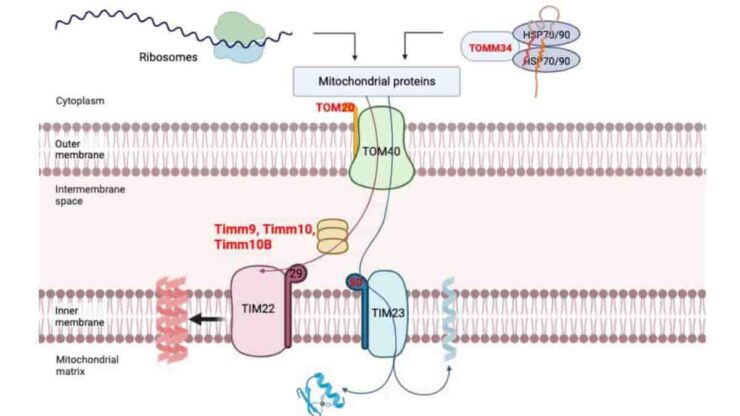A new study from the University of Southern California Leonard Davis School of Gerontology reveals that a genetic mutation in a small protein, which had not been previously identified, confers substantial protection against Parkinson’s disease and provides a novel avenue for investigating potential treatments.
The variation, found in a mitochondrial microprotein called Small Humanin-like Peptide 2 (SHLP2), was discovered to be extremely protective against Parkinson’s disease; people who possess it are half as likely to get the condition as those who do not. The variant form of the protein is rather uncommon and is seen largely in people of European origin.
“This study advances our understanding of why people might get Parkinson’s and how we might develop new therapies for this devastating disease. Also, because most research is done on well-established protein-coding genes in the nucleus, it underscores the relevance of exploring mitochondrial-derived microproteins as a new approach to the prevention and treatment of diseases of aging.”
said senior author Pinchas Cohen, professor of gerontology, medicine and biological sciences.
Changing SHLP2 Levels
First discovered by Cohen at the USC Leonard Davis School in 2016, SHLP2 is made within the cell’s mitochondria. Previous research from the Cohen Lab established that SHLP2 is associated with protection from aging-related diseases including cancer.
Levels of the microprotein change in patients with Parkinson’s disease; they rise as the body attempts to counteract the pathology of Parkinson’s disease but often fail to mount additional production as the disease progresses.
An advancement at the intersection of longevity science, precision health, and microprotein discovery, this most recent discovery expands on the USC team’s prior mitochondrial research.
Decreased Parkisnon’s Risk 50%
Su-Jeong Kim, an adjunct research assistant professor of gerontology at the USC Leonard Davis School, led a series of experiments for this study that used the lab-developed microprotein discovery pipeline, which begins with a large data-driven analysis to identify disease-related variants. The SHLP2 variation was found in thousands of human study subjects from the Health and Retirement Study, Cardiovascular Health Study, and Framingham Heart Study.
Researchers identified a highly protective variant in the mitochondrial DNA of 1% of Europeans by comparing it to controls. This variant decreased the risk of Parkinson’s disease by twofold, to an average of 50%.
They then showed that this naturally occurring mutation changes the amino acid sequence and protein structure of SHLP2. The mutation, which is a single nucleotide polymorphism (SNP) or a change in a single letter of the protein’s genetic coding, is essentially a “gain-of-function” variant that is related with increased SHLP2 production and also makes the microprotein more stable.
According to their findings, the SHLP2 variant has high stability compared to the more common type and provides enhanced protection against mitochondrial dysfunction.
Roadmap for Developing New Therapeutic Targets
The researchers were able to identify the tiny peptide’s existence in neurons using targeted mass spectrometry techniques, and they discovered that SHLP2 selectively interacts to an enzyme in mitochondria called mitochondrial complex 1. This enzyme is required for life; reductions in its performance have been related to not only Parkinson’s disease, but also strokes and heart attacks.
The SHLP2 variant is more stable, which means that the microprotein binds to mitochondrial complex 1 more stably. This stops the enzyme’s activity from decreasing, which in turn lowers mitochondrial dysfunction.
The study reports that the advantages of the mutant form of SHLP2 were established in mouse models of Parkinson’s disease and in vitro experiments utilizing human tissue samples.
“Our data highlights the biological effects of a particular gene variant and the potential molecular mechanisms by which this mutation may reduce the risk for Parkinson’s disease. These findings may guide the development of therapies and provide a roadmap for understanding other mutations found in mitochondrial microproteins,”
said Kim.
Abstract
Mitochondrial DNA single nucleotide polymorphisms (mtSNPs) have been associated with a reduced risk of developing Parkinson’s disease (PD), yet the underlying mechanisms remain elusive. In this study, we investigate the functional role of a PD-associated mtSNP that impacts the mitochondrial-derived peptide (MDP) Small Humanin-like Peptide 2 (SHLP2). We identify m.2158 T > C, a mtSNP associated with reduced PD risk, within the small open reading frame encoding SHLP2. This mtSNP results in an alternative form of SHLP2 (lysine 4 replaced with arginine; K4R). Using targeted mass spectrometry, we detect specific tryptic fragments of SHLP2 in neuronal cells and demonstrate its binding to mitochondrial complex 1. Notably, we observe that the K4R variant, associated with reduced PD risk, exhibits increased stability compared to WT SHLP2. Additionally, both WT and K4R SHLP2 show enhanced protection against mitochondrial dysfunction in in vitro experiments and confer protection against a PD-inducing toxin, a mitochondrial complex 1 inhibitor, in a mouse model. This study sheds light on the functional consequences of the m.2158 T > C mtSNP on SHLP2 and provides insights into the potential mechanisms by which this mtSNP may reduce the risk of PD.
Reference:
- Kim, SJ., Miller, B., Hartel, N.G. et al. A naturally occurring variant of SHLP2 is a protective factor in Parkinson’s disease. Mol Psychiatry (2024). Doi: 10.1038/s41380-023-02344-0
Top image: A schematic of mitochondrial protein import system. SHLP binding proteins from a SHLP2 column mass spectrometry experiment were highlighted in red. Credit: Mol Psychiatry (2024). Doi: 10.1038/s41380-023-02344-0
